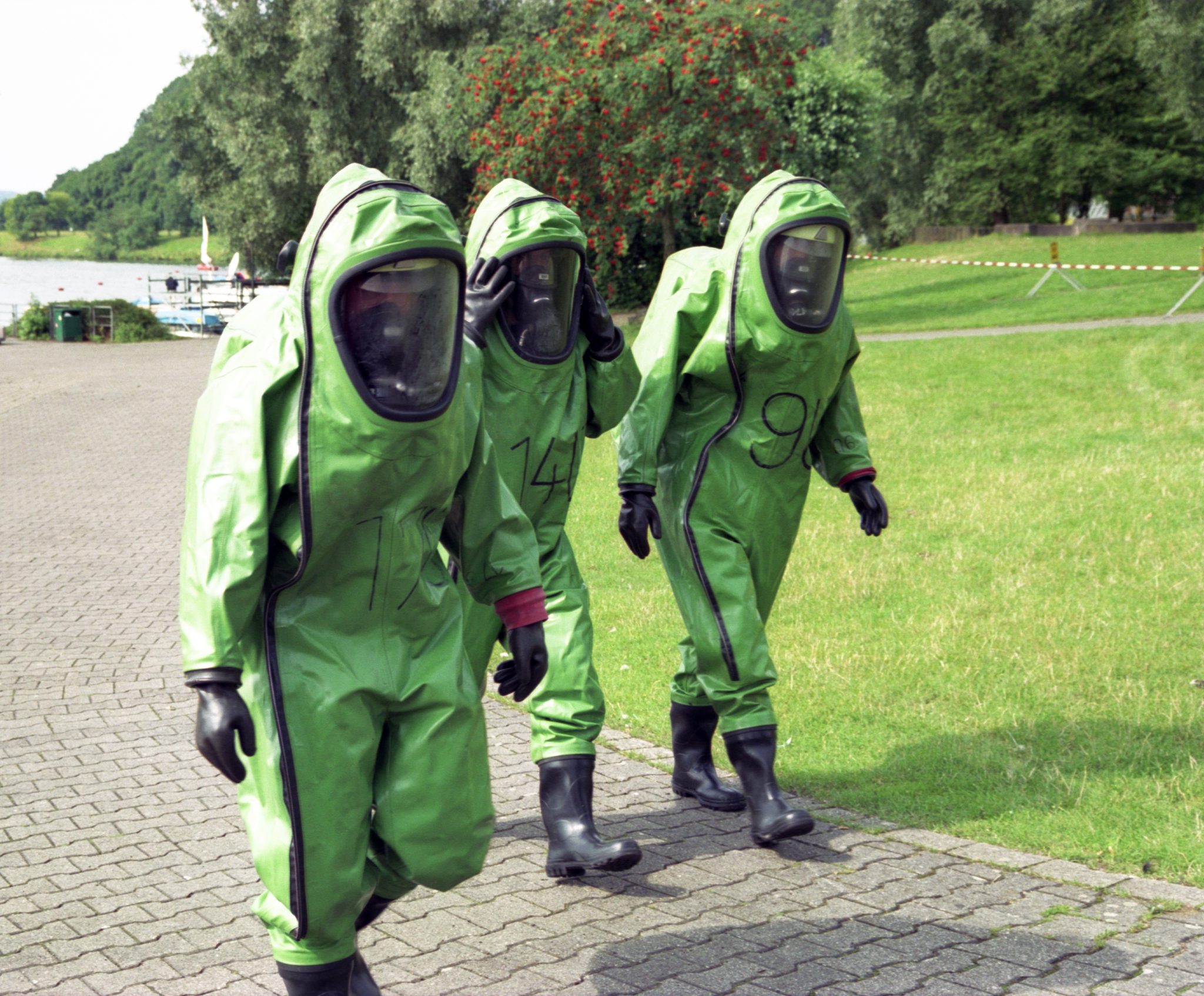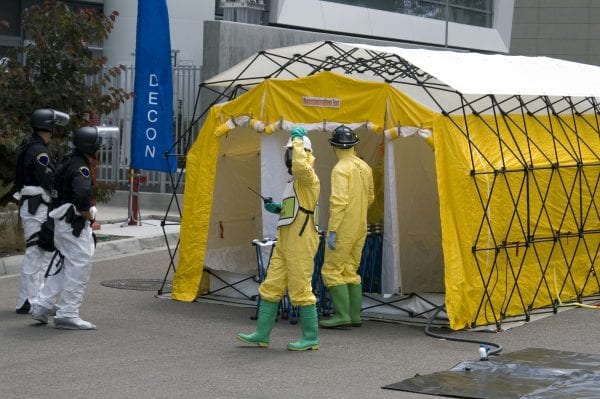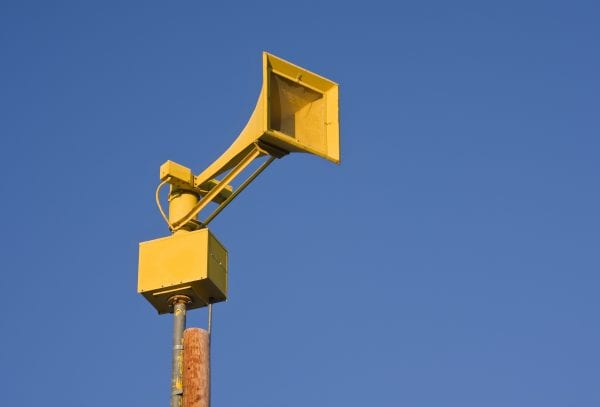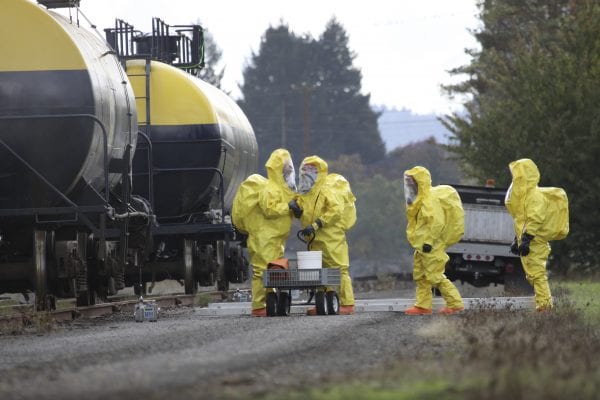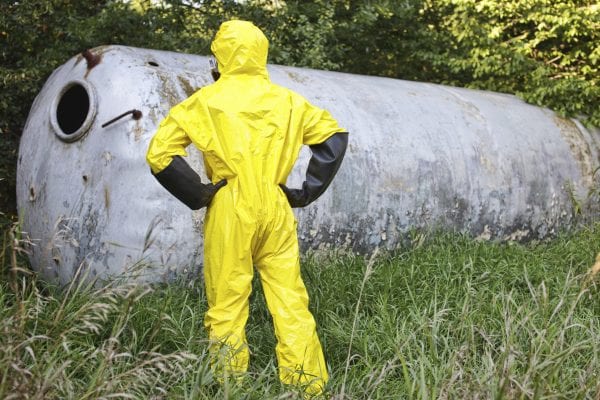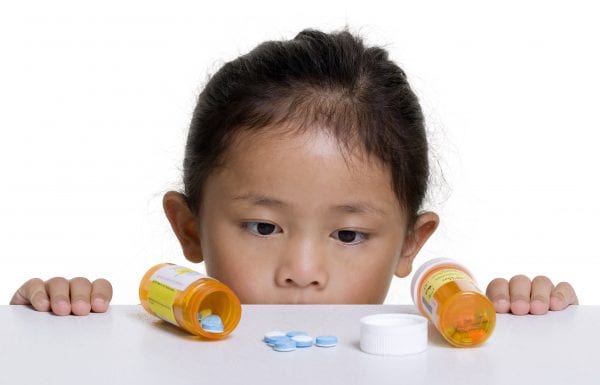Emergency Handbook

You may be exposed to a chemical in three ways:
- Breathing the chemical
- Swallowing contaminated food, water, or medication
- Touching the chemical, or coming into contact with clothing or things that have touched the chemical
- Remember, you may be exposed to chemicals even though you may not be able to see or smell anything unusual.
Preventing Chemical Accidents
Chemicals are found everywhere—in our kitchens, medicine cabinets, basements, and garages. Most chemical accidents occur in our own homes. And they can be prevented.
Responding During a Chemical Emergency
Many organizations help the community in an emergency, such as police, fire, and sheriff’s departments; the American Red Cross; and government agencies. All of these groups coordinate their activities through the local office of emergency management. In many areas, local hazardous materials (hazmat) teams are trained to respond to chemical accidents.
If an accident involving hazardous materials occurs, you will be notified by the authorities as to what steps to take. You may hear a siren or be called by telephone; or emergency personnel may drive by and give instructions over a loudspeaker. Officials could even come to your door. If you hear a warning signal, you should go indoors and listen to a local Emergency Alert System (EAS) station for emergency instructions from county or state officials.
Points to Remember
- In the event of an emergency, follow the instructions of the authorities carefully. They know best how to protect you and your family. Listen to your emergency broadcast stations on radio and TV.
- If you are told to shelter in place, go inside and seal all windows and doors. Close all vents and turn off all fans and heating or cooling systems. Take family members and pets to a safe room and listen to emergency broadcast stations for instructions.
- If you are told to evacuate immediately, follow your family emergency plan. Take your family emergency supplies kit. Pack only the bare essentials, such as medications, and leave your home quickly. Follow the traffic route authorities recommend. Don’t take shortcuts on the way to the shelter.
- If you find someone who appears to have been injured from chemical exposure, make sure you are not in danger before administering first aid.
- Remember, the best way to protect yourself and your family is to be prepared.
Accidental Poisoning
The most common home chemical emergencies involve small children eating medicines. Keep all medicines, cosmetics, cleaning products, and other household chemicals out of sight and out of reach of children. Experts in the field of chemical manufacturing suggest that doing so could eliminate up to 75 percent of all poisoning of small children.
If someone in your home eats or drinks a nonfood substance, immediately find the container it came out of and take it with you to the phone. Call the Poison Control Center (1-800-222-1222), Emergency Medical Services (EMS), 9-1-1, or the operator and tell them exactly what your child ingested.
Follow their instructions carefully. The first aid advice found on the container may not be appropriate. Do not give anything by mouth until you have been advised by medical professionals.
Poison Proof Your Home
Product packages and sometimes actual products can look so much alike that a small child or an adult with poor or failing eyesight may be unable to tell the difference. Inventory your home and grounds to sharpen awareness of potential poisons and reduce the chances of accidental poisoning.
Dangerous Look-Alikes, HE-0935
Used by permission of the American Red Cross.
Use pesticides only according to the directions on the label. Follow all directions, precautions, and restrictions that are listed. Do not use pesticides on plants that are not listed on the label. Trade and brand names used are given for information purposes only. No guarantee, endorsement, or discrimination among comparable products is intended or implied by the Alabama Cooperative Extension System. This publication is for information purposes only and should not be a substitute for recommendations or treatment by a health care provider.

